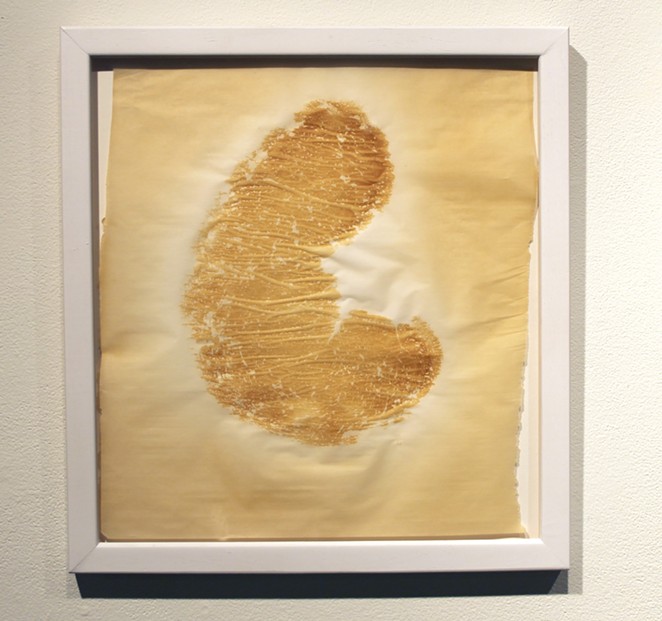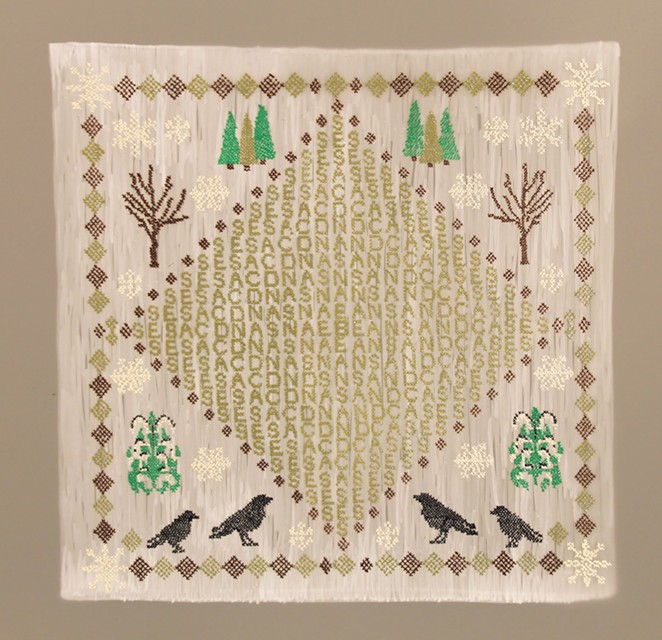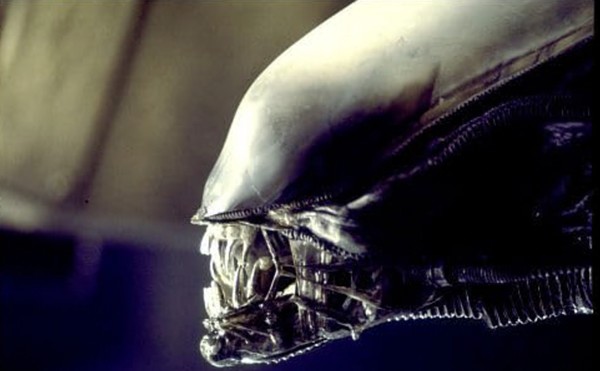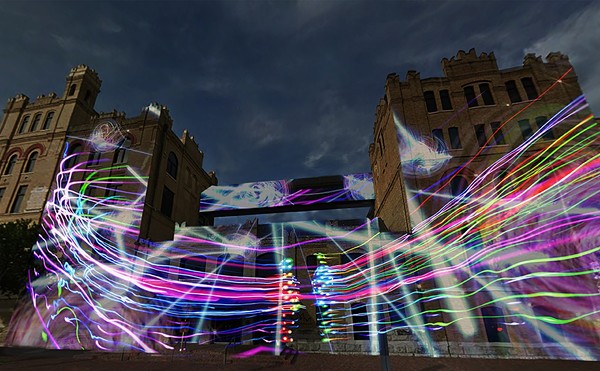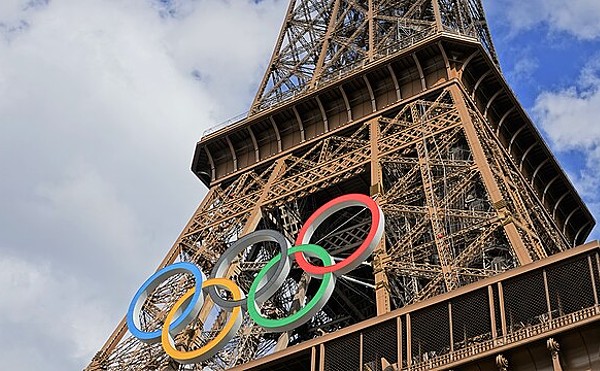Encompassing everything from delicate paintings on mylar to cast concrete sculptures, her projects are almost always driven by personal narratives and memories. While knowing the inside stories behind her pieces makes them more fascinating, they stand on their own and can be appreciated without any knowledge of the autobiographical threads.
A native New Yorker, Fleisher earned a BFA from Syracuse University, an MFA from the Rhode Island School of Design and a collegiate teaching certificate from Brown University. While teaching in Syracuse, Fleisher and her husband Jonathan Hudak had a son and decided to relocate to be closer to parental support. At the time, her parents lived in Queens and his lived in Helotes.
“So, we picked San Antonio,” Fleisher said. “And I did not hesitate at all.”
While house-hunting, the couple opted for a place in northwest quadrant of the city. Not only was it affordable and close to his parents’ home, it came with a two-car garage Fleisher could claim as a studio. Not long after settling in, she began teaching sculpture, 3D design and art appreciation — between San Antonio College and the University of Texas at San Antonio — and exhibiting her work throughout Texas.
As she’s preparing for a Contemporary Art Month exhibition at Sala Diaz, Fleisher’s studio is a flurry of activity.
When I arrived, she was working on a new piece — a concrete sculpture modeled after a lime-green bathmat she bought several years ago. Rendered in thick, loopy yarn, the rug reminded Fleisher of artist Mona Hatoum’s intestinal-looking sculpture Rubber Mat. When she brought it home, her cat Cujo attacked, pounced and skidded on it.
“He determined it wasn’t a threat,” she said. “But he proved that there was just something inherently curious or off about the object. So, we were on the same page.”
Making a mold from fabric often involves resin, but Fleisher has an aversion to that method and “invented a new way” involving shellac and “an obscene amount of petroleum jelly.” During out visit, Fleisher seemed equally excited about using three large tubs of Vaseline — the Walmart cashier didn’t blink an eye — and high-end lime-green concrete pigment custom made by Buddy Rhodes in Pennsylvania.
That mix of high and low sensibilities can be seen throughout her studio — including “stained glass” works rendered with plexiglas, markers and silicone caulk, and intricate recreations of needlepoints and embroideries made with puff paint on layered mylar.
Echoing the familiar-yet-unfamiliar domestic look of her bathmat, a finished piece on the studio floor resembled a patterned bath towel she made with chicken wire and caulk then hung on a handcrafted wooden towel bar. (The idea came to her while she was retiling her bathroom.)
It’s clear a diverse array of materials are at play in her work.
“If I do a couple of pieces with one material that I’m working with, I make a point to stop and shift to something else,” she explained.
After moving inside for a chat over iced tea and Girl Scout Cookies, Fleisher shed light on an ongoing series of “bread prints” titled Risen: I Put The Yeast In. While teaching a class that started in late morning and finished in the early afternoon, she started looking for a creative activity she could do with her young son in her free time.
“I was looking for activities that we could do to bookend the day,” she said. “And I thought about making bread — you mix up the dough in the morning and then it’s got to sit while it rises. And you come back and knead it, bake it. Making dough is the best thing to do with a three-year-old. He would drive his cars up it and walk his LEGO people over it — which is not hygienic, but we’re the ones eating it.”
After establishing this ritual, Fleisher noticed the parchment paper lining the baking trays became imprinted by the bread. That led her to experiment with different loaf shapes.
“It burned the parchment paper in this really beautiful way that kind of imparted it with sentiment, spirituality, mystery,” she said. “Sort of like the Jesus in the toast.”
Simultaneously earthy and ghostly, the series comprises 11 unique prints cheekily named after the shapes they represent, including Infinite Loaf, Haloaf, Love Loaf and Embryoaf.
Bread isn’t the only food that factors into Fleisher’s work. In 2015, she incorporated pastina — tiny pieces of pasta often shaped like stars — into two pieces she showed at Blue Star Contemporary. And in 2018, she earned a grant to produce the Tricentennial installation Travis Park: First Fruits. Diving into the park’s history, Fleisher made some unexpected discoveries that shaped the project.
“I found that Travis Park was originally the property of the Alamo and then it changed hands to Samuel Maverick,” she said. “According to legend, it was his personal peach orchard. I dug a bit deeper and found that 2018 was also the 100-year anniversary of the American Peach Pit Collection, during World War I. They had to perfect the gas mask, [and] scientists discovered that peach pits … when rendered down to a charcoal [made] a really absorbent material. Three hundred peach pits were needed for one gas mask … and the Texas Hill Country contributed a massive number of peach pits because at that time, in 1918, they were country’s top producer of peaches.”
Drawing from this research, Fleisher created nine concrete sculptures, all involving peaches or peach pits, plus an informational mural providing context.
Roughly three years ago, Fleisher’s parents moved from New York to San Antonio. As she helped them pack and unpack, small mysteries bubbled to the surface and she found creative inspiration in the things she came across. “My great-grandmother’s hand-crocheted gloves and a doily that she had made [were] in the same box [as] paper doilies from the Dollar Store,” she said. “There was this weird juxtaposition of these two similar objects that do the same thing, but one is completely imbued with family history and the other is like garbage.” She felt similarly intrigued by three cross-stitches her mother bought at a flea market. Drawn in by these delicate relics, Fleisher started tracing them on mylar and replicating their patterns with puff paint. At a glance, they look nearly photorealistic. Research ensued and Fleisher came across a 1700s-era cross-stitch on a museum’s website. “They don’t know who did it, but they call it an acrostic puzzle,” she explained. “It says, ‘Send Your Accounts,’ [backwards and forwards]. So it’s like a word puzzle … and it’s this object of mystery.” Fleisher then translated that format to illustrate a “forever mystery” of her own — the words “Beans and Cases” written on a chalkboard at the New York hospital where she took prenatal classes. “We were like, what does ‘Beans and Cases’ mean? Nobody knew, and it was there for a while. A lot of the work that I do comes out of these things that stick in my memory over time.” Bordering her mylar mimicry of the antique acrostic are crows, snowflakes, conifers, and lillies of the valley — all hallmarks of her life in Syracuse and the birth of her son.
Fleisher’s upcoming Sala Diaz show “Solid Remembering” represents eight years of work — none of which has ever been shown in San Antonio. The work on display includes her “bread prints” and a carved wooden wheelbarrow spilling out an entire landscape fashioned from model railroad materials — a piece inspired by the monumental task of filling garden beds with soil. The exhibition also showcases her mastery with mylar — especially in Last Puffs, a three-dimensional recreation of her late grandmother’s final box of Kleenex. Although the title reflects the persistence of memory in her work, Fleisher confessed that it’s lifted from a video game she plays with her son, who’s almost 11.
“It’s from Katamari Forever,” she said. “There are three Katamari games, and they’re amazing. There’s the King of All Cosmos, and you’re the Prince and you roll this sticky ball across the world and pick up things. Then the King uses that sphere to make stars. In Katamari Forever, the King — who is like a giant, he’s larger than the Earth — gets hit in the head with a rocket and gets amnesia. So, you have to roll around Earth to collect things [that] trigger his memory. If you do a good job … he says, ‘You collected a lot of things, that’s some solid remembering.’”
‘Solid Remembering’
Free, opening reception 7-10 p.m. Friday, Mar. 20, on view 3-7 p.m. Thursday-Saturday through May 30, Sala Diaz, 517 Stieren St., (972) 900-0047, saladiazart.org.
Stay on top of San Antonio news and views. Sign up for our Weekly Headlines Newsletter.


